
Kvasny Prumysl
Scope & Guideline
Elevating Knowledge in Brewing Science and Technology.
Introduction
Aims and Scopes
- Barley and Malt Research:
The journal extensively covers the characterization, quality assessment, and genetic resources of barley and malt, including studies on historical vs. contemporary varieties and their impact on brewing quality. - Hop Variety Evaluation:
A significant focus is placed on the evaluation of hop varieties, including their agronomic traits, essential oil composition, and contributions to beer flavor profiles. - Microbiology in Brewing:
Research concerning the role of microorganisms in brewing processes is prominent, including yeast characterization, fermentation science, and the implications of microbial contamination. - Sensory and Chemical Analysis:
The journal publishes studies on the sensory attributes of beer and malt, as well as chemical analyses that explore the stability, degradation, and flavor profiles related to various brewing practices. - Innovative Brewing Technologies:
There is a consistent emphasis on technological advancements in brewing, including new methods for quality assessment, brewing equipment development, and sustainable practices in the industry.
Trending and Emerging
- Sustainability and Climate Adaptation:
Research on drought-tolerant hop genotypes and sustainable agricultural practices is gaining traction, highlighting the industry's response to climate change and the need for resilient crop varieties. - Microbiome and Fermentation Science:
There is an increasing emphasis on the characterization of brewing yeasts and their interactions, as well as studies on microbial consortia for fermentation, reflecting a deeper understanding of microbiology's role in brewing. - Consumer Preferences and Sensory Science:
An emerging focus on the sensory profile of beers and the impact of maturation time on flavor indicates a growing interest in consumer experience and product quality. - Innovative Brewing Techniques:
Recent publications have highlighted new brewing technologies and methods, including the use of recycled materials and improved fermentation processes, signaling an innovative approach within the brewing sector.
Declining or Waning
- Historical Brewing Practices:
Research focusing on traditional brewing methods and historical brewing practices has decreased, possibly as the industry moves towards modernization and innovation. - Non-Microbiological Turbidity Studies:
While earlier issues featured in-depth studies on non-microbiological turbidity in beer, this theme appears to have waned, suggesting a possible resolution of earlier concerns or a shift towards more pressing issues within brewing. - Brewing with Alternative Grains:
There has been a noticeable reduction in studies exploring the use of alternative grains and adjuncts in brewing, indicating a possible consolidation around barley as the primary grain for brewing.
Similar Journals
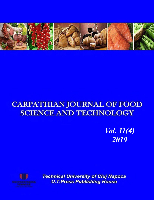
Carpathian Journal of Food Science and Technology
Fostering a Global Dialogue on Contemporary Food IssuesCarpathian Journal of Food Science and Technology, a distinguished publication from the NORTH UNIV CENTER BAIA MARE, has been a pivotal platform for disseminating groundbreaking research in the field of food science since its inception in 2009. With an ISSN of 2066-6845 and an E-ISSN of 2344-5459, this Open Access journal aims to promote knowledge and innovation, offering unrestricted access to its content, thereby enhancing visibility for authors and facilitating a wider readership. Based in Romania, the journal plays a crucial role in advancing scientific inquiry within the agricultural and biological sciences, particularly focusing on contemporary food science issues. As it continues its convergence through 2024, the journal currently holds a Q4 ranking in the Food Science category, allowing it to carve out a unique niche within the academic community despite its current Scopus percentile ranking of 19th. Scholars, researchers, and students in the field will find the journal an invaluable resource for the latest advancements and discussions, making it an essential addition to their academic pursuits.

Acta Scientiarum Polonorum-Technologia Alimentaria
Pioneering Insights in Food Safety and QualityActa Scientiarum Polonorum-Technologia Alimentaria, published by Poznan University of Life Sciences, is a revered journal in the field of food science, showcasing cutting-edge research and innovations in food technology. Established as a leading platform within its domain, this journal is indexed under Scopus and ranks in the 2023 Q3 quartile for Food Science, demonstrating its commitment to high-quality scholarship. With an ISSN of 1644-0730 and E-ISSN 1898-9594, it serves as a critical resource for researchers, professionals, and students seeking to stay at the forefront of advancements in food safety, quality control, and sustainable practices. The journal has also been recognized for its contributions to the agricultural and biological sciences, positioning itself at rank #205 out of 389 in this competitive field. While currently not offering open access, the journal's valuable insights and findings, especially as it publishes through 2024, play a crucial role in advancing knowledge and fostering collaboration among experts in the food science sector.
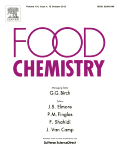
Food Chemistry
Advancing Knowledge in Food Composition and SafetyFood Chemistry, published by Elsevier Science Ltd, is a leading international journal dedicated to the publication of high-quality research in the field of food chemistry. Established in 1976, this journal has made a significant impact in its realm, with an impressive 2023 impact factor and ranked Q1 in Analytical Chemistry, Food Science, and miscellaneous Medicine categories. It currently holds a remarkable Scopus ranking of #3 in Analytical Chemistry and #11 in Food Science, signifying its relevance and prestige among the top scholarly publications. With a wide scope that includes the chemistry of food composition, flavor, and safety, Food Chemistry serves as an essential resource for researchers, professionals, and students alike, offering insights and advancements in food analysis and technology. Access options may vary, and the journal is committed to disseminating innovative findings to foster knowledge and application in the dynamic field of food science.
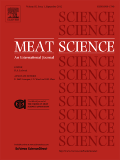
MEAT SCIENCE
Charting New Frontiers in Meat Science ResearchMEAT SCIENCE is a premier peer-reviewed journal dedicated to the exploration of the science of meat and meat products, contributing significantly to the fields of food science and technology. Published by Elsevier Science Ltd, this esteemed journal has been in circulation since 1977 and is recognized for its rigorous standards and impactful research, as evidenced by its Q1 category ranking in Food Science for 2023 and a notable 96th percentile ranking in Agricultural and Biological Sciences. The journal fosters innovative discussions and dissemination of cutting-edge research, covering a diverse range of topics including meat quality, safety, technology, and consumer preferences. With no open access options, MEAT SCIENCE caters to a dedicated audience of researchers, professionals, and students, serving as a vital resource for advancing knowledge and practices within the global meat industry. By continually pushing the boundaries of meat science, this journal plays a crucial role in shaping future research and industry standards.
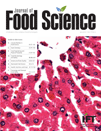
JOURNAL OF FOOD SCIENCE
Transforming Discoveries into Practical SolutionsJOURNAL OF FOOD SCIENCE, published by Wiley, is a premier journal dedicated to advancing the field of food science, bridging the gap between fundamental research and practical application. With an impressive impact factor reflecting its authoritative status, the journal is ranked in the Q1 quartile for Food Science in 2023 and boasts a Scopus ranking of #71 out of 389, placing it in the 81st percentile within Agricultural and Biological Sciences. First launched in 1936, the journal continues to serve as an essential platform for researchers, professionals, and students to disseminate innovative studies and reviews that address critical issues in food quality, safety, and technology. While not currently offering open access, its rigorous peer-review process ensures the dissemination of high-quality and impactful research. Researchers engaged in the vital disciplines of food science will find this journal indispensable for keeping abreast of cutting-edge developments in the field.

Turkish Journal of Field Crops
Cultivating Knowledge, Harvesting SolutionsTurkish Journal of Field Crops is a prestigious peer-reviewed publication dedicated to advancing the field of agronomy and crop science, published by the Society of Field Crop Science. With an ISSN of 1301-1111, this journal serves as a crucial platform for researchers and professionals to disseminate innovative findings and discuss practical applications in crop cultivation and management. Hailing from Turkey, it aims to address the pressing challenges facing agriculture in both regional and global contexts, particularly over its converged years from 2009 to 2024. As a Q3 ranked journal in the Agronomy and Crop Science category with a Scopus ranking of #259/406 and a percentile of 36th, it fosters high-quality research that contributes to the sustainable development of field crops. Though it operates under various access options, this journal is committed to providing valuable insights into agronomic practices, aiming to bridge the gap between theory and application for scientists, educators, and practitioners alike.
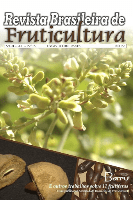
Revista Brasileira de Fruticultura
Connecting Researchers for Global Impact in Fruit ScienceRevista Brasileira de Fruticultura, published by the Sociedade Brasileira de Fruticultura, is a leading scholarly journal dedicated to the advancement of research in the fields of agronomy, crop science, food science, horticulture, and plant science. With an impressive Open Access model adopted since 2001, the journal is committed to disseminating high-quality research from Brazil and beyond, promoting innovation and collaboration among researchers, professionals, and students alike. The journal currently holds a respectable Q3 category ranking in multiple fields as of 2023, reflecting its significance within the scientific community, specifically ranked #72 in horticulture and #257 in agronomy, among its peers. The Revista Brasileira de Fruticultura not only serves as a platform for original research articles, reviews, and case studies but also emphasizes practical applications and sustainable practices in fruit cultivation. Its aim is to enhance the visibility of Brazilian fruit research on a global scale, making it an invaluable resource for those invested in advancing horticultural sciences.
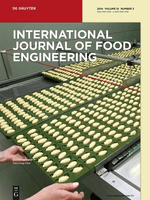
International Journal of Food Engineering
Advancing Food Innovation through Engineering ExcellenceThe International Journal of Food Engineering, published by WALTER DE GRUYTER GMBH, serves as a pivotal platform for cutting-edge research in the field of food engineering. With an ISSN of 2194-5764 and an E-ISSN of 1556-3758, this journal focuses on innovative technologies, production processes, and quality control within food systems. Located in Germany, the journal has gained notable recognition, as reflected in its Scopus rankings, which place it within the 61st percentile in miscellaneous engineering and the 50th percentile in food science. Although it operates under a traditional access model, the journal's striking category quartiles signify its importance: achieving Q2 in Engineering and Q3 in both Biotechnology and Food Science in 2023. By fostering interdisciplinary research, the International Journal of Food Engineering aims to connect scientists, engineers, and industry professionals, ultimately contributing to advancements in food safety, sustainability, and nutrition. Join a vibrant community of experts driving innovation and addressing global food challenges through your contributions to this esteemed journal.

Food Chemistry-X
Pioneering Research for a Healthier Tomorrow.Food Chemistry-X is a premier open-access journal published by Elsevier, dedicated to advancing the field of food chemistry through high-quality research and comprehensive reviews. With its ISSN of 2590-1575, the journal has gained significant attention since adopting an open-access model in 2019, allowing wide dissemination of knowledge and innovations in food science. Based in the United Kingdom, it holds prestigious Q1 rankings in both Analytical Chemistry and Food Science categories as of 2023, positioning itself as a leading platform for researchers worldwide. The journal's focus spans extensive topics within food chemistry, including food safety, nutritional analysis, and the chemical properties of food, offering insights that are crucial for addressing contemporary challenges in food production and consumption. With a Scopus rank placing it in the 65th percentile among the top journals in Food Science and the 58th percentile in Analytical Chemistry, Food Chemistry-X is an essential resource for academics, professionals, and students seeking to stay at the forefront of research and innovation in this vibrant field.
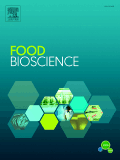
Food Bioscience
Unlocking Knowledge for Tomorrow's Food ChallengesFood Bioscience is a leading peer-reviewed journal published by Elsevier, dedicated to advancing the understanding of the complex interplay between food science and biosciences. With an impressive Impact Factor that places it in the Q1 and Q2 quartiles for Food Science and Biochemistry respectively, the journal consistently ranks among the top publications in its field, reflected in its Scopus rankings (Rank #83/389 in Food Science and Rank #175/438 in Biochemistry). Since its inception in 2013, Food Bioscience has fostered a multidisciplinary approach, bridging gaps between research in agricultural, biological, and food sciences, thus encouraging innovative solutions to the pressing challenges facing the global food supply chain. Although it currently operates under a subscription model, the journal is committed to disseminating high-quality research, making significant contributions to both academic scholarship and industry practices. Researchers, professionals, and students alike are invited to explore the wealth of knowledge contained within its pages as it plays a pivotal role in shaping the future of food bioscience.